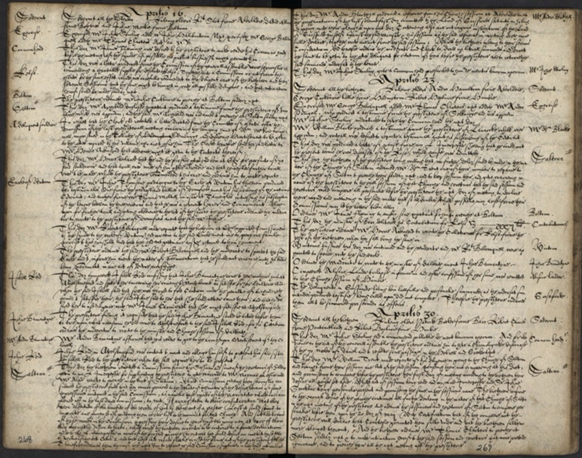Between 1560 and 1689, there were some 1,100 parishes in Scotland, each one served by a minister who, ideally, preached sermons once or twice a week, offered communion at least once a year, visited the sick and dying, oversaw the behaviour and morality of his neighbours, alongside a host of other responsibilities. As the Protestant Reformation in Scotland progressed, these men (and their families) became increasingly central to how religious change was experienced at a local level. Despite this prominence, we know remarkably little about them.
The project Mapping the Scottish Reformation is an attempt to track all of Scotland’s ministers between the Reformation Parliament in 1560 and the Glorious Revolution in 1689. And by ‘track’, I mean that the project seeks to trace their movements: the big milestones in clerical careers, where and when they lived, and where they moved, where they were educated, who they married, and what happened to their children. The end result will be a weather map of sorts, that will allow us to observe ministers’ movements and the process of religious change.
How do we find out about these people? We rely on surviving documents that were made at the time, usually by Church courts known as presbyteries. These documents are all housed in the National Records of Scotland in Edinburgh, must be searched by most users on site, and must be transcribed by each visitor. There are no real indexes to help. Here’s an example of a two-page spread, typical of the manuscripts we use:
To date, as part of our first case study, we have parsed around 3,500 pages of manuscript material like this, extracting twenty-two different data points: including ministers’ names, the parishes they served, the dates when they were appointed, the dates they transferred to other parishes, where they were educated, the locations to which they moved, when they were disciplined, when they died, etc.
Most of the individuals we have found are obviously relatively obscure and have no item entry in Wikidata. Some were captured as part of the recent project the Survey of Scottish Witchcraft, but most remained unknown to Wikidata. As such, we have created around one thousand new items over the last two months, all of which serve as a framework to record the key parameters of a cleric’s career.
To ensure our data entry was as quick and reliable as possible, it was essential that we structured each new cleric on Wikidata by using existing properties. We followed the structure for most ‘human’ (Q5) entries to Wikidata, but then added ‘occupation’ and ‘residence’ properties. We added ‘start time’ and ‘end time’ qualifiers to ‘residence’ so we could track precisely when a minister arrived and left his parish.
To capture the complexity of clerical careers in early modern Scotland, we made use of the ‘Significant Event’ property (P793). We had to get a little creative here, because some of the specialist terminology relating to the Church did not exist in Wikidata’s reams of items. As such, we created the following items that can be classified as ‘significant events’:
- deposed (Q89273000)
- suspension (Q89273310)
In some rather more fruity cases, we made use of existing items such as ‘illness’, ‘repentance’, and even ‘execution’, as other ways to capture significant events. Coupled with the ‘point in time’ qualifier, we were able to record this information in quite a detailed way.
One of the essential parts of this project is that we need to meticulously record where we obtained our information. As such, we had to devise a method to record manuscript information in Wikidata’s referencing system. Again, after lengthy consideration, we made use of existing properties already on Wikidata to capture the information we required. Incredibly, when used together, the properties ‘collection’, ‘inventory number’, and ‘folio(s)’ allowed us to recreate an academically robust system to reference manuscripts in their complexity. Here is an example:

In summary, Wikidata’s existing menu of properties and items provides significant amounts of flexibility in designing schema that can capture the messy and complex world of the early modern cleric. Indeed, the scope of Wikidata’s flexibility could accommodate a range of projects that gather data from manuscript sources. During the several months we have been working with Wikidata, we have successfully ported over thousands of data points from manuscripts kept under lock and key at the National Records of Scotland, traced the careers of over 900 clerics and started, tentatively to manipulate this data through the Wikidata Query Service. Keep watching our website mappingthescottishreformation.org and our Twitter account, @MappingScotsRef to see how our project, and our integration with Wikidata, develops.
Chris R. Langley is Senior Lecturer in Early Modern History at Newman University, Birmingham. Mapping the Scottish Reformation is funded by the National Endowment for the Humanities and the Strathmartine Trust.






